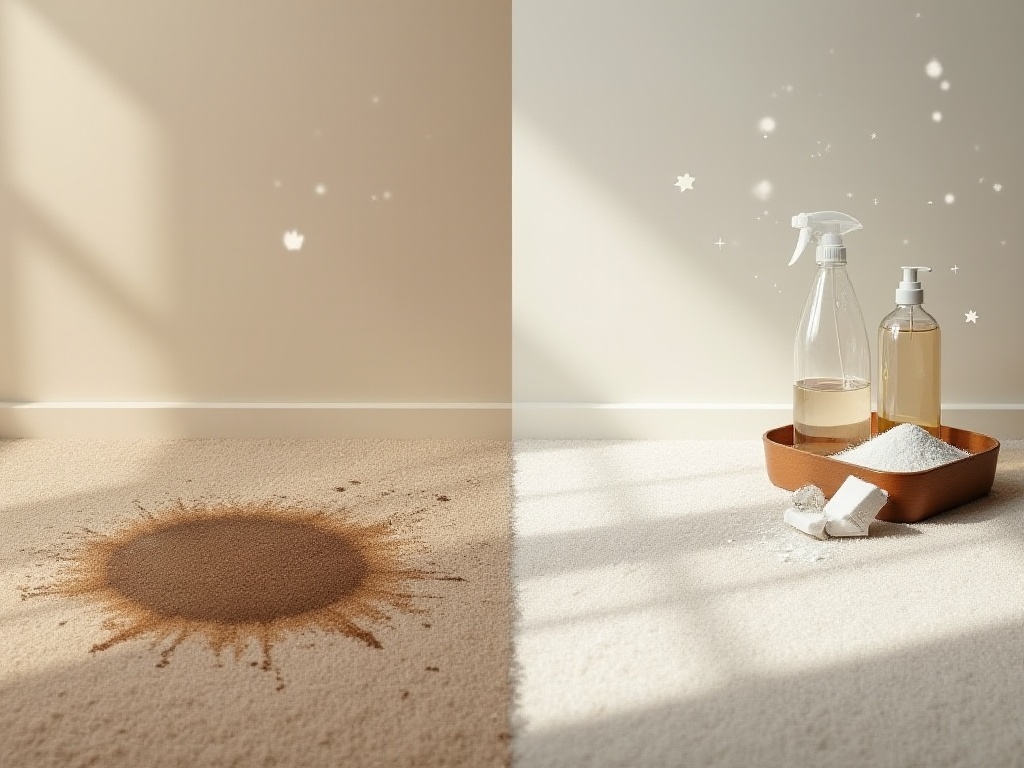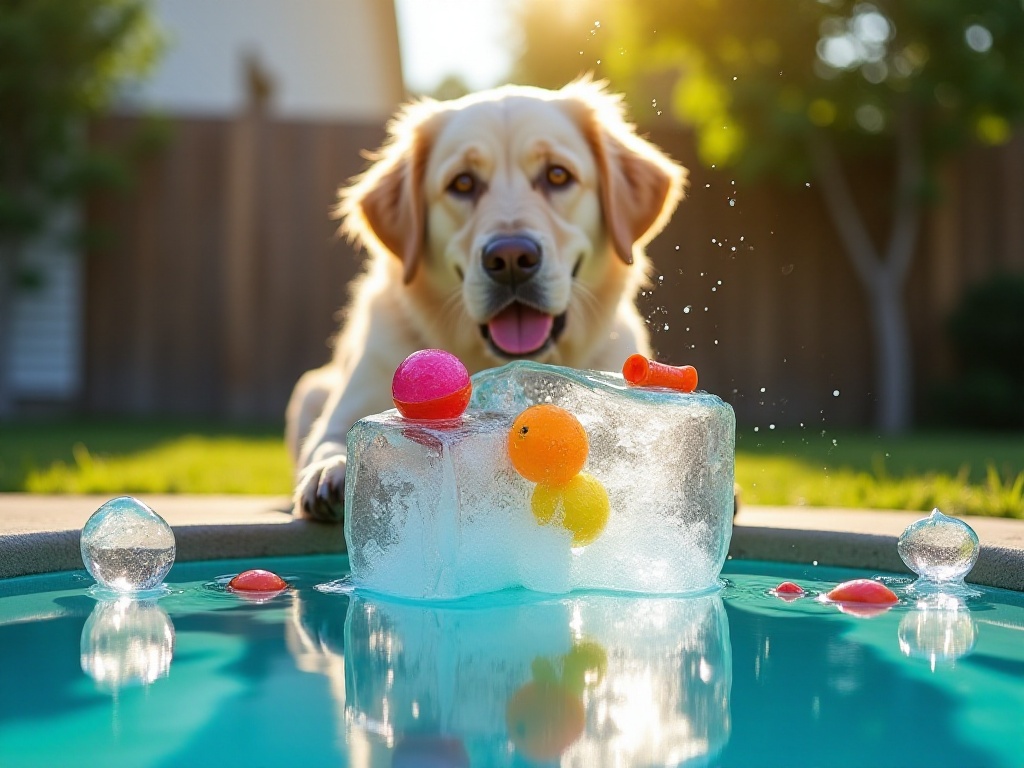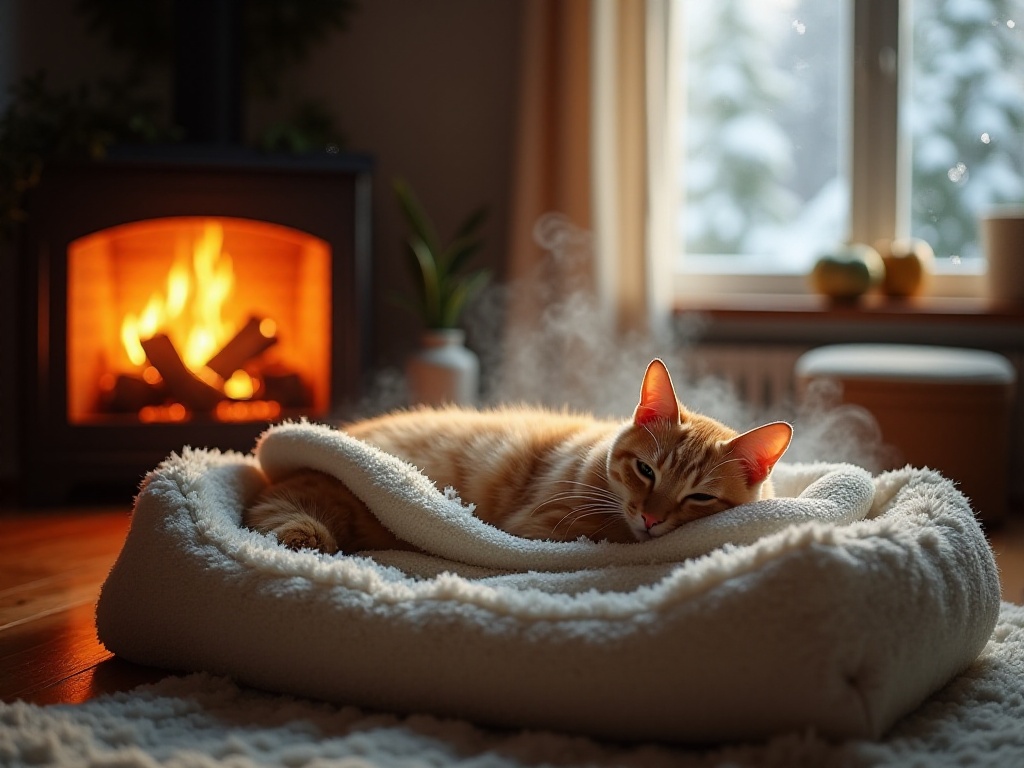Opening Chat
As a veteran pet owner of over ten years, every moment spent with my furry friends brings me special happiness. I remember when I first started keeping pets, I was completely overwhelmed - feeding, bathing, walking dogs, scooping poop - I wasn't good at any of it. After years of exploration, I've finally mastered some exclusive tips. Today, I want to share all these years of accumulated experience with everyone, hoping to help more newcomer pet parents avoid some detours.
Smart Feeding
When it comes to pet care, eating and drinking are the most basic and important issues. Many new pet parents encounter pitfalls in feeding, and I myself went through quite a bit of trial and error before finding the right methods.
Dogs eating too quickly is a problem that really troubles many owners. When my Golden Retriever first arrived, he was such a little foodie, demolishing a bowl of dog food in no time, often getting hiccups and even vomiting from eating too fast. Later I discovered a particularly effective trick: putting a tennis ball in the food bowl. This forces the dog to eat around the ball, necessarily slowing down their pace. When first using this method, my Golden Retriever was quite unaccustomed to it and tried to paw the ball out, but after persisting for a week, he completely adapted. Now he enjoys each meal elegantly and slowly, no longer feeling uncomfortable from eating too quickly.
Speaking of weight management, many pet owners encounter the problem of their furry friends becoming overweight. I recently discovered an interesting "green pea diet method." It involves adding an appropriate amount of unsalted green peas to the dog's regular food. Green peas are not only low in calories but also particularly good at making dogs feel full. A friend's Corgi used this method to transform from an initial chubby pup into a slim beauty. However, it's important to note that every dog's constitution is different, and the amount of green peas added should be determined based on specific circumstances. It's advisable to consult a veterinarian before trying this.
Water intake is also very important. Many cats don't like to drink water, in which case you can try a "fountain-style" water dispenser. Flowing water will stimulate their curiosity, naturally leading them to drink more. My cat used to be completely uninterested in regular water bowls, but after switching to a fountain water dispenser, she often runs to play with the water, solving the water intake problem instantly.
Another feeding tip is scheduled portion feeding. You can buy an automatic feeder and set the time and portions. This not only cultivates regular eating habits in pets but also prevents missed meals due to busy owners. I particularly rely on this gadget when I'm traveling, and no longer worry about my cat going hungry.
The choice of treats is also particular. Not all human foods are suitable for pets, for example, chocolate, grapes, and onions are absolutely forbidden. I generally choose specialized pet treats and strictly control the amount, not exceeding 10% of their daily food intake. It's best to choose treats that help clean teeth, achieving two purposes at once.

Cleaning Tips
When it comes to the most headache-inducing problems of pet ownership, cleaning definitely tops the list. Especially dealing with urine stains on carpets can be absolutely maddening. After countless attempts and failures, I finally found some particularly effective cleaning methods.
First, let's talk about dealing with urine stains. I recently discovered a super practical cleaning formula: baking soda plus white vinegar. This method not only removes stains but also thoroughly eliminates odors. The specific steps are as follows: First, use thick paper towels to absorb the urine stain, changing the paper towels several times to ensure it's absorbed fairly well. Then prepare an equal mixture of water and white vinegar, spray it evenly on the stain using a spray bottle. Next, sprinkle a layer of baking soda powder, and you'll see the baking soda and vinegar react, starting to bubble. After the reaction has mostly finished, gently rub with a clean cloth, then let it air dry naturally. Finally, vacuum up the dried baking soda and you're done. The first time I used this method, I was absolutely amazed - that stubborn urine stain actually disappeared, and not even a trace of odor remained.
Speaking of cleaning, perhaps the most annoying thing is pet hair flying all over the house. Especially during seasonal changes, it's literally hair flying everywhere, with clumps of fur in every corner. I discovered that rubber brooms work particularly well because rubber has a static effect that can attract hair. It's especially magical for dealing with carpet edges where vacuum cleaners can't reach. I was shocked by the amount of hair swept up the first time I used it - enough to knit a scarf.
For pet hair on furniture, I have a particularly effortless method. Just wear disposable rubber gloves, then lightly run your hand over the furniture surface. The hair will stick to the gloves due to static electricity, making it very easy to clean. This method works especially well when cleaning fabric sofas.
Then there's the issue of litter boxes. Many new cat owners encounter situations where cats scatter litter everywhere. Actually, the solution is simple: choose an appropriate litter box. I recommend top-entry litter boxes, the kind designed like small houses where cats enter from the top. This design effectively prevents litter from being scattered and also helps avoid odor spread. Remember to place a litter mat at the entrance of the litter box, so even if some litter sticks to the cat's paws, it will be absorbed by the mat rather than being tracked to other parts of the house.
Regarding pet bathing, I also have some insights to share. First is the frequency of baths - don't bathe them too often, as it will damage their skin's protective layer. Unless they're particularly dirty, cats generally only need a bath every 1-2 months, while for dogs it can be decided based on their activity level, but shouldn't be too frequent. The water temperature during baths should be moderate, preferably close to human body temperature. It's particularly important to dry them thoroughly, especially inside their ears, otherwise they can easily get ear mites.

Comfort Assurance
Pets' comfort directly relates to their physical and mental health. In this aspect, I've also summarized many practical tips.
Summer heat prevention is a big issue. Besides maintaining indoor ventilation, I freeze dogs' toys in water. This way they can cool down while playing with their toys. However, note that frozen toys shouldn't be played with for too long to avoid catching cold. I usually prepare several toys to rotate, so the dogs can keep playing happily.
In winter, keeping warm becomes the focus. I place a hot water bottle under the pet bed, but it must be wrapped in a towel to prevent burns. This method is especially useful when caring for sick pets or stray animals. I remember one particularly cold winter when I used this method to help a stray cat downstairs survive the cold nights. Later that cat wouldn't leave my home and has now become a member of our family.
Regarding living environment, cats particularly need their own territory. I've set up cat activity spaces in various corners of the house, such as cat trees, cat beds, hiding boxes, etc. This gives them their own private space, making them happier. Especially for older cats, it's best to set up resting places at different heights in the room, making it more convenient for them to move up and down.
For pets that often stay home alone, I leave the TV on or play some music for them. Scientific research shows that appropriate background sound can reduce pets' feelings of loneliness and anxiety. I also leave some of my worn clothes in places where they frequently stay, so they feel more secure when they smell their owner's scent.

Medication Tips
Giving medication to pets can be really troublesome, sometimes it's like going to war. But I discovered a super effective method - making homemade pill pockets.
The specific method is to use a tiny bit of peanut butter or cheese to wrap the pill. This not only masks the medicine's smell but also makes them take medicine voluntarily. Now when my cat sees me taking out medicine, she excitedly comes over, thinking it's treat time. However, note that the amount of food wrapping the pill should be kept minimal, so it doesn't affect their normal diet.
For topical medications like ear drops or eye drops, I choose to use them when they're eating or particularly relaxed. First gently massage them for a while, wait until they're completely relaxed before applying the medicine, which makes it much easier.
Sometimes we have to trim their nails, which is also a skilled task. My experience is to proceed gradually, not cutting too much at once. It's best to do it while they're sleeping, just trimming one or two nails at a time. Remember to prepare styptic powder in case you accidentally cut into the blood vessel in the nail.

Closing Thoughts
Keeping pets is truly a profound subject that requires continuous learning and summarizing of experience. The above tips are all conclusions from my practical experience, and I hope they can help more pet parents. Every pet is a unique individual with different personalities and needs. When trying new methods, be sure to adjust according to your own pet's specific situation. Most importantly, have patience and give them enough love and tolerance.
Remember, when we choose to keep pets, we choose a responsibility. They will repay our efforts with unconditional love. I hope every pet parent can get along happily with their furry children and create beautiful memories together.
Finally, I must remind everyone that although these tips are very practical, it's best to consult a professional veterinarian before trying new methods to ensure they're suitable for your furry friend. After all, we all want to give them the best care and help them grow up healthy and happy.


